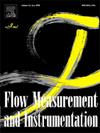Investigation of flow field simulation and pulsation performance of non-circular gear hydraulic motor
IF 2.3
3区 工程技术
Q2 ENGINEERING, MECHANICAL
引用次数: 0
Abstract
The non-circular gear hydraulic motor is widely used in hydraulic transmission systems for mining and underground machinery, owing to its low velocity, high output torque, and compact structure. This paper focuses on the 4–6 type non-circular gear hydraulic motor as the research object. The influence of the coupling between the motor's internal flow field and the operation of the gear train on the motor's power pulsation performance is analysed using the mesh and particle-based methods. A three-dimensional fluid model of the motor is developed to systematically investigate the effects of pressure and flow velocity on the motor's stability. With regard to the pulsation rate of the motor, this study analyses the comparative relationship between the theoretical torque pulsation rate and the theoretical flow pulsation rate, while simultaneously considering the variation of the flow pulsation rate under the influence of oil entrapment in the gear teeth. The results show that the theoretical flow pulsation rate of the motor is basically consistent with the theoretical torque pulsation rate. However, when considering the oil entrapment in the motor gear teeth, the flow pulsation rate increases. In the flow field simulation, the flow velocity distribution in the flow field is found to be uneven. Specifically, high-velocity flow is formed in the air gap area, while in the area close to the sun gear and the inner gear ring, the flow is poor and stagnation phenomena occur, which aggravates the oil entrapment phenomenon. The findings of this study provide a theoretical basis for optimizing the performance of non-circular gear hydraulic motors and offer new insights into the simulation analysis of complex moving flow field, as well as the relationship between flow pulsation rate and oil entrapment characteristics.
非圆齿轮液压马达流场仿真及脉动特性研究
非圆齿轮液压马达具有转速低、输出转矩大、结构紧凑等优点,广泛应用于矿山和井下机械的液压传动系统中。本文主要以4-6型非圆齿轮液压马达为研究对象。采用基于网格和粒子的方法,分析了电机内部流场与齿轮系运行之间的耦合对电机功率脉动性能的影响。建立了电机的三维流体模型,系统地研究了压力和流速对电机稳定性的影响。在电机脉动率方面,分析了理论转矩脉动率与理论流量脉动率的对比关系,同时考虑了齿轮齿内夹油影响下流量脉动率的变化。结果表明,电机的理论流量脉动率与理论转矩脉动率基本一致。然而,当考虑到油困在电机齿轮齿时,流量脉动率增加。在流场模拟中,发现流场中的流速分布是不均匀的。具体而言,在气隙区域形成高速流动,而在靠近太阳齿轮和内齿圈的区域,流动不良,出现停滞现象,加剧了夹油现象。研究结果为优化非圆齿轮液压马达性能提供了理论依据,为复杂运动流场的仿真分析以及流场脉动率与含油特性的关系提供了新的见解。
本文章由计算机程序翻译,如有差异,请以英文原文为准。
求助全文
约1分钟内获得全文
求助全文
来源期刊

Flow Measurement and Instrumentation
工程技术-工程:机械
CiteScore
4.30
自引率
13.60%
发文量
123
审稿时长
6 months
期刊介绍:
Flow Measurement and Instrumentation is dedicated to disseminating the latest research results on all aspects of flow measurement, in both closed conduits and open channels. The design of flow measurement systems involves a wide variety of multidisciplinary activities including modelling the flow sensor, the fluid flow and the sensor/fluid interactions through the use of computation techniques; the development of advanced transducer systems and their associated signal processing and the laboratory and field assessment of the overall system under ideal and disturbed conditions.
FMI is the essential forum for critical information exchange, and contributions are particularly encouraged in the following areas of interest:
Modelling: the application of mathematical and computational modelling to the interaction of fluid dynamics with flowmeters, including flowmeter behaviour, improved flowmeter design and installation problems. Application of CAD/CAE techniques to flowmeter modelling are eligible.
Design and development: the detailed design of the flowmeter head and/or signal processing aspects of novel flowmeters. Emphasis is given to papers identifying new sensor configurations, multisensor flow measurement systems, non-intrusive flow metering techniques and the application of microelectronic techniques in smart or intelligent systems.
Calibration techniques: including descriptions of new or existing calibration facilities and techniques, calibration data from different flowmeter types, and calibration intercomparison data from different laboratories.
Installation effect data: dealing with the effects of non-ideal flow conditions on flowmeters. Papers combining a theoretical understanding of flowmeter behaviour with experimental work are particularly welcome.
 求助内容:
求助内容: 应助结果提醒方式:
应助结果提醒方式:


